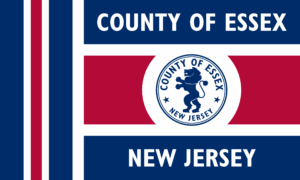West Orange, NJ: Mountainside Roots, Black Brilliance, and a Township Forging Its Own Path
Stretching up the Watchung Mountains and hugging the edges of Essex County, West Orange, New Jersey is more than a suburb—it’s a layered community where diversity lives in the details, and history is as bold as the present. From Thomas Edison’s lab to Black Lives Matter murals, from winding park trails to first-gen college dreams, West Orange is where heritage and hustle collide. But behind its tree-lined streets and high-achieving schools are pressing questions: Who’s included? Who’s still waiting for their turn?
Origin and History
West Orange’s history is equal parts innovation, migration, and redefinition.
- Lenape Homeland: This land originally belonged to the Lenape people, whose trails, fishing routes, and forest settlements shaped the area long before colonization.
- Industrial Roots: Formerly part of the larger Orange Township, West Orange became a hotbed of industry and invention in the 1800s—especially after Thomas Edison set up his laboratory here in 1887.
- Incorporation: West Orange was incorporated as a township in 1863, becoming known for its mix of residential charm, working-class neighborhoods, and proximity to Newark and NYC.
- Black and Immigrant Legacy: Over the 20th century, West Orange became home to growing Black, Caribbean, Jewish, and immigrant communities seeking upward mobility, safe housing, and good schools.
Demographics
West Orange is diverse by the numbers—but equity is always a work in progress.
- Population: Approx. 48,000 residents (2020 U.S. Census)
- Cultural Composition: Roughly 40% white, 32% Black, 20% Latinx, 8% Asian—with strong Haitian, Jamaican, Nigerian, Dominican, Ecuadorian, and Indian communities.
- Languages Spoken: English is primary, but Spanish, Haitian Creole, Yoruba, Tagalog, and Patois are spoken in homes, churches, and neighborhood stores.
- Interfaith & Multicultural Fabric: Synagogues, mosques, and Black churches sit side by side, reflecting generations of cultural coexistence and civic engagement.
Geographic Location and Size
West Orange sits at the crossroads of urban access and suburban sprawl.
- Size: 12 square miles
- Borders: Adjacent to South Orange, Orange, Montclair, Verona, and Livingston.
- Transit Access: Served by NJ Transit buses (to Newark and NYC), major highways (280, 287), and commuter shuttle options. While not on a train line, proximity to South Orange Station supports hybrid commuters.
Where We Thrive
West Orange thrives in its schools, spiritual life, green spaces, and deep-rooted organizing.
- Public Schools: West Orange Public Schools serve nearly 7,000 students with a reputation for academic rigor, diversity, and strong arts and athletic programs. Ongoing equity efforts include racial justice task forces and restorative practices.
- Thomas Edison National Historical Park: Preserves the lab where Edison worked on inventions like the phonograph and electric light—an anchor of local tourism and learning.
- South Mountain Reservation & Turtle Back Zoo: These public green spaces are local treasures for families, nature lovers, and educators alike.
- Civic Life: From Haitian Women for Haitian Refugees to Black parent networks to LGBTQ+ youth groups, West Orange is home to a rich civic ecosystem pushing for visibility and care.
Fun Facts and Local Gems
- Thomas Edison’s Home & Lab: Known as Glenmont, this site is part of the National Park Service and offers guided tours through Edison’s estate.
- Degnan Park & Community Center: A hub for sports, music events, and senior services.
- Downtown Main Street: A mix of old diners, beauty salons, and new cafes that reflect the township’s cultural evolution.
- West Orange Arts Council (WOAC): Hosts rotating exhibits, workshops, and youth art shows highlighting local talent.
Challenges and Change
Beneath the reputation, West Orange faces real structural and emotional tensions.
- School Equity: Despite strong test scores, racial disparities persist in AP class access, discipline, and gifted-and-talented tracking. Parents and students continue to push for cultural responsiveness and accountability.
- Housing Affordability: Rising costs, limited rental stock, and zoning that favors single-family homes make it hard for working-class families to stay rooted.
- Policing and Youth: Black and brown students continue to report over-surveillance in public spaces. Community-led safety alternatives are emerging, but more is needed.
- Development vs. Preservation: New construction and downtown revitalization have sparked debates about traffic, green space, and cultural displacement.
Community Voices
“We’ve got a lot of pride in this town—and we should. But real equity takes more than diversity slogans. It takes budget decisions, school board courage, and listening to the people raising their kids here now.”
— Marsha B., Haitian American educator and PTA member
Why West Orange Matters
West Orange is a mirror—showing New Jersey what’s possible, and what’s still broken. It’s a place where Black history lives in both archives and front yards, where immigrant families build futures, and where youth are demanding that justice reach their hallways and homes. West Orange matters not just because of its past—but because of what its present can teach us all.
HFYC uplifts West Orange because legacy without equity is incomplete—and this town is ready to finish the story.
Call to Action
Live in West Orange? Know a youth leader, elder, educator, artist, civic worker, or organizer making a quiet impact?
Let us help tell their story.
Submit a feature, nominate a changemaker, or reflect on what West Orange means to you—from the rec center to the ridge.
